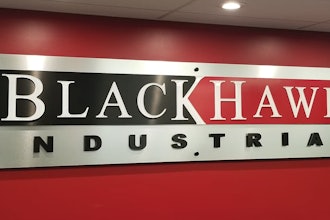This article originally appeared in the July/August 2012 issue of Industrial Distribution. To view it in its original format, click here.
The Council of Supply Chain Management Professionals (CSCMP) released its 23rd Annual “State of Logistics Report®,” presented by Penske Logistics, June 16th at a press conference at the National Press Club in Washington, D.C. The report reveals that total U.S. business logistics costs in 2011 rose to $1.28 trillion, a 6.6 percent increase from the previous year and accounting for 8.5 percent of the U.S. gross domestic product (GDP).
The report, authored by transportation consultant Rosalyn Wilson of Delcan, Inc., has tracked and measured all costs associated with moving freight through the U.S. supply chain since 1988. This year’s report presents an overview of the economy over the past year, the logistics industry’s key trends, and the total U.S. logistics costs for 2011. It also examines which sectors of the industry are recovering, which are facing challenges, and areas that can be targeted for increased investment. The research concludes with a brief overview of industry indicators for the remainder of 2012. The supply chain management benchmark report is now available for distribution.
This year’s report reveals that with overall revenue 15.3 percent higher than 2010, railroads gained market share, especially in intermodal, and did not experience the capacity problems faced by the trucking sector. Trucking companies are also using intermodal rail help to offset the impacts of driver shortages and the costs of acquiring and maintaining new equipment. In spite of tightening capacity and an overall decline in volume, trucking rates were up five to 15 percent in 2011.
Even with the air cargo sector’s record year for exports, the industry still experienced a decline, with domestic air cargo revenue down more than three percent compared with less than a one percent decline in international revenue. Ocean carriers’ woes continued with growing excess capacity, rate erosion, service declines, and operational losses.
Inventory carrying costs in 2011 continued their rising trend and overall inventories have returned to pre-recession levels, which could be a cause for concern for the economy. The growth has occurred among wholesalers and manufacturers while retail inventories remained flat, indicating that inventory management processes have changed.
“Part of our mission at CSCMP is to develop and disseminate research that helps our members understand how to do their jobs better,” says Rick Blasgen, president and chief executive officer of the CSCMP. “Knowing how logistics and supply chain costs affect and are affected by the larger economy is a key part of this understanding. This is why we believe it’s important to sponsor the annual ‘State of Logistics Report,’ which we present with support from Penske Logistics.
“The statistics and industry insights contained in this report will help companies better prepare for the business demands that lie ahead,” Blasgen adds. “We look forward once again to working with Penske’s thought leaders to present this year’s research and translate its findings into real world terms.”
“This report consistently delivers key insights that paint a broad picture of the supply chain industry and the U.S. economy,” says Joe Gallick, Senior Vice President – Sales for Penske Logistics. “We’re pleased to be sponsoring this widely followed report once again.”
Titled “The Long And Winding Recovery,” this year’s report presentation by Wilson also noted changes in several areas:
• U.S. exports of goods and services increased by 14.5 percent in 2011 to $2.10 trillion, while imports increased 13.8 percent to $2.66 trillion. In fact, several records were set for exports in 2011. U.S. exports of manufactured goods reached a record $1.27 trillion in 2011, up 15.1 percent from 2010. One of the leading manufacturing sectors was motor vehicles and parts, which grew 17.7 percent. Industrial supplies represented the largest goods export category with a record $499.5 billion worth of exports in 2011, followed by capital goods with a record $491.4 billion. For the first time since 1949 the U.S. became a net exporter of oil in 2011. U.S. refiners exported record amounts of gasoline, heating oil, and diesel to meet higher global fuel demand, while U.S. fuel consumption dropped. The deteriorating global economy and those of some of our major trading partners, along with the strengthening of the U.S. dollar, combined with other factors to slow down trade as 2011 progressed.
• “Manufacturing and business spending have carried the economy throughout the recession and recovery, but they were not as strong in 2011. The longer the recovery takes without solid sustainable economic growth, the more reticent businesses become about hiring and investment,” says Wilson. “This was evident in the data for the second half of 2011. Industrial Production was up only 3.9 percent in 2011, much lower than the 6.3 percent rise in 2010. A promising sign was the strengthening in consumer goods production.” Industrial production for consumer goods was up 2.7 percent in 2011, compared to 0.8 percent the year before. Manufacturing for businesses and construction rose by 7.9 and 4.6 percent, respectively, slower than the corresponding 2010 increases of 12.7 and 9.8 percent.
• All business inventories increased in all quarters. Inventory levels are now close to the levels that were experienced at the height of the recession, ending the year at the highest point since third quarter 2008. The average investment in all business inventories (agriculture, mining, construction, services, manufacturing, wholesale, and retail trade) increased to over $2.1 trillion in 2011, a jump of eight percent. “We have been pointing out an inventory management trend that began prior to the recession. Retailers have leaned their inventories on hand and now require their suppliers to deliver only the product they need,” says Wilson. “As a result, retail inventories have been relatively stable while wholesale and manufacturing inventories have increased.” During most of 2011, manufacturing and wholesale sales and inventory levels were well matched. However, at the end of the years when manufacturing was slowing and retailers were not restocking their shelves, stockpiles were rising. The retail inventory-to-sales ratio skyrocketed during the recession, from 1.26 in late 2007 to 1.48 in early 2009, mirroring the steep rise in inventories as sales dropped off. The ratio was very stable during 2011, indicating the retailers have adjusted to the new level of spending and unpredictable changes in demand. The flat retail inventory-to-sales ratio masks the growth in the wholesale and manufacturing inventories that back up retailers.
• Taxes, obsolescence, depreciation, and insurance rose 8.2 percent in 2011. The increase in these components is directly related to the growth in inventories. Insurance rates were fairly stable last year and did not have a substantial impact other than the cost of insuring more goods. Taxes, depreciation, and obsolescence, on the other hand, accounted for most of the increase because of the higher inventory levels.
• The cost of warehousing was up 7.6 percent in 2010. The excess capacity of warehouse space in the industry drove rates down over the last few years. As inventory levels have risen, space has been filled and rents were pushed up. The warehousing industry has been improving its product management within the warehouse and its processes with carriers serving the facilities with new software and equipment to improve the efficiency and maximize throughput. In addition they have branched out to offer services beyond the traditional packaging and handling related tasks, including 3PL services. Building of new warehousing facilities had slowed to a trickle, but in 2011 new capacity was added to the system and some markets even reported very low available capacity.
The full “State of Logistics Report®” is available to CSCMP members free of charge as part of their member benefits at http://cscmp.org/memberonly/state.asp. The price of the report is $395.00 USD.
About Penske Logistics
Penske Logistics is a wholly owned subsidiary of Penske Truck Leasing. With operations in North America, South America, Europe and Asia, Penske Logistics provides supply chain management and logistics services to major industrial and consumer companies throughout the world. Penske Logistics delivers value through design, planning, and execution in transportation, warehousing, and international freight forwarding and carrier management. To learn more visit www.PenskeLogistics.com and our “Move Ahead” blog.
About CSCMP
Founded in 1963, the Council of Supply Chain Management Professionals (CSCMP) is the leading worldwide professional association dedicated to education, research, and the advancement of the supply chain management profession. With more than 9,000 members globally, representing business, government, and academia from 63 countries, CSCMP members are the leading practitioners and authorities in the fields of logistics and supply chain management.






















